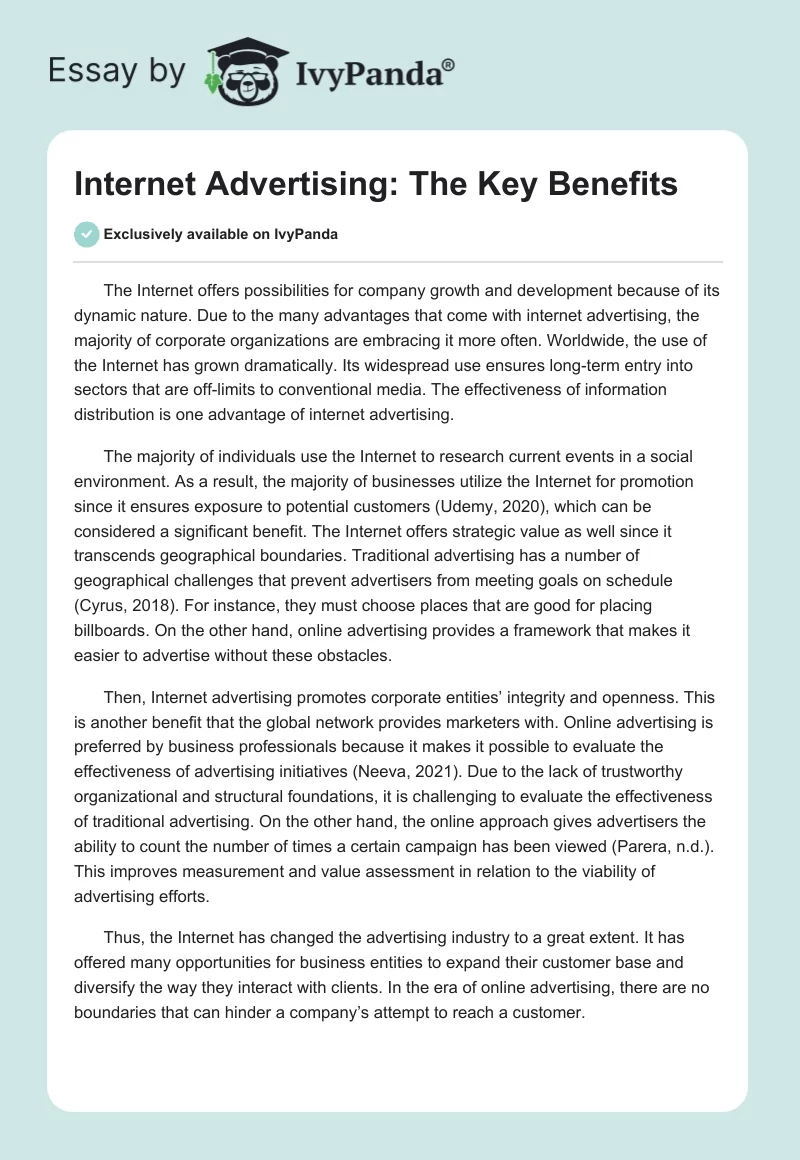The Internet offers possibilities for company growth and development because of its dynamic nature. Due to the many advantages that come with internet advertising, the majority of corporate organizations are embracing it more often. Worldwide, the use of the Internet has grown dramatically. Its widespread use ensures long-term entry into sectors that are off-limits to conventional media. The effectiveness of information distribution is one advantage of internet advertising.
The majority of individuals use the Internet to research current events in a social environment. As a result, the majority of businesses utilize the Internet for promotion since it ensures exposure to potential customers (Udemy, 2020), which can be considered a significant benefit. The Internet offers strategic value as well since it transcends geographical boundaries. Traditional advertising has a number of geographical challenges that prevent advertisers from meeting goals on schedule (Cyrus, 2018). For instance, they must choose places that are good for placing billboards. On the other hand, online advertising provides a framework that makes it easier to advertise without these obstacles.
Then, Internet advertising promotes corporate entities’ integrity and openness. This is another benefit that the global network provides marketers with. Online advertising is preferred by business professionals because it makes it possible to evaluate the effectiveness of advertising initiatives (Neeva, 2021). Due to the lack of trustworthy organizational and structural foundations, it is challenging to evaluate the effectiveness of traditional advertising. On the other hand, the online approach gives advertisers the ability to count the number of times a certain campaign has been viewed (Parera, n.d.). This improves measurement and value assessment in relation to the viability of advertising efforts.
Thus, the Internet has changed the advertising industry to a great extent. It has offered many opportunities for business entities to expand their customer base and diversify the way they interact with clients. In the era of online advertising, there are no boundaries that can hinder a company’s attempt to reach a customer.
References
Parera, E. (n.d.). Internet Advertising Introductory Guide: why you need it, what options do you have and 10 tips for getting the best results. Postcron. Web.
Cyrus, R. (2018). The importance of advertising on social networks. Local Advertising Journal. Web.
Neeva. (2021). How does online advertising work? Web.
Udemy. (2020). The advantages of advertising on the Internet. Web.


